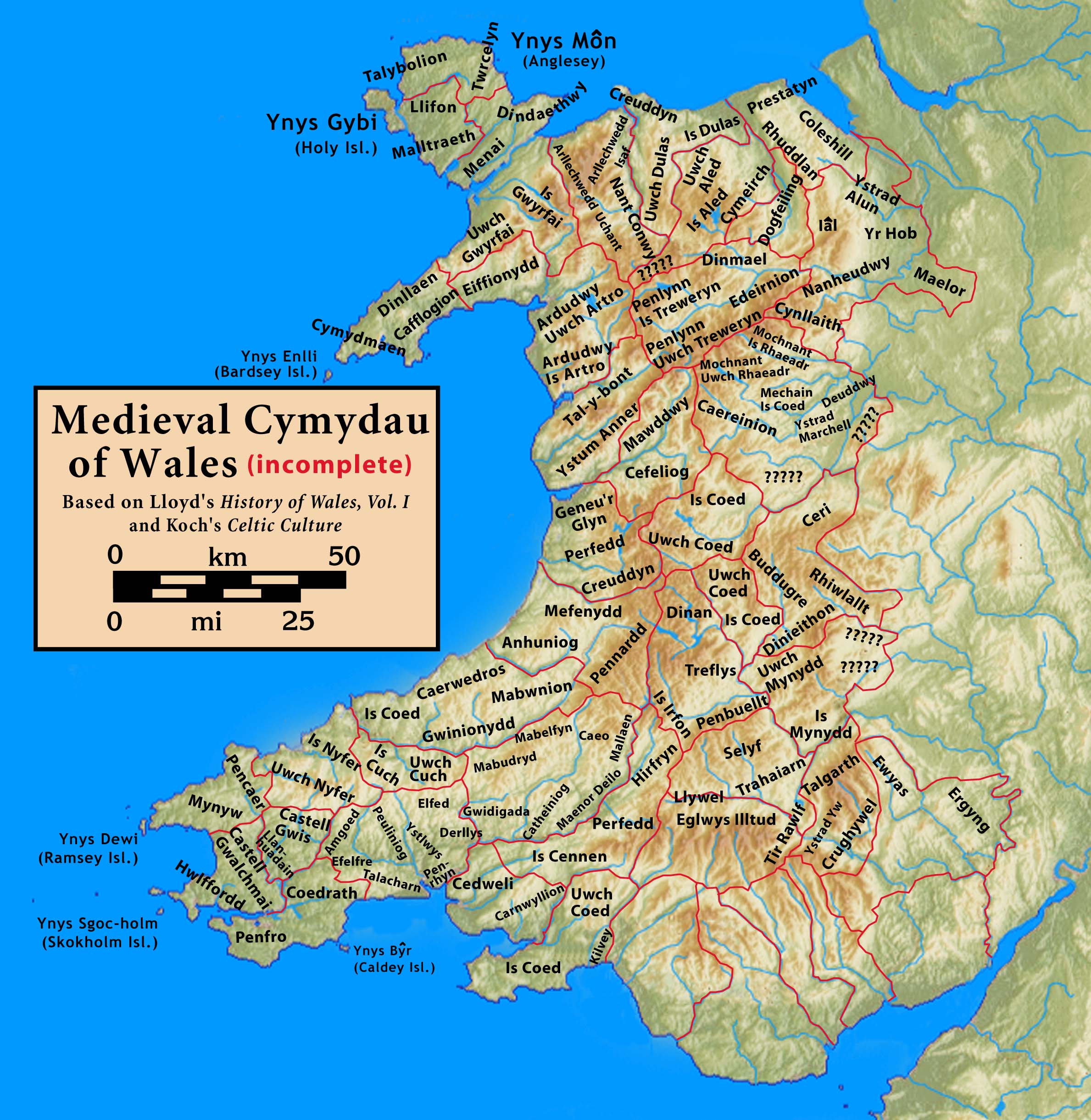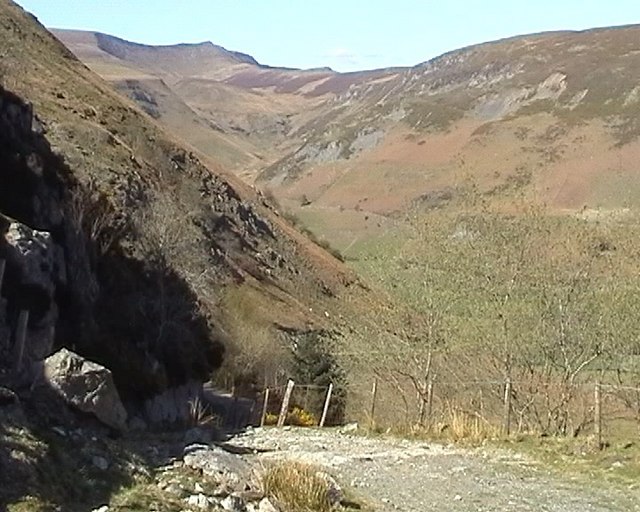Mochnant on:
[Wikipedia]
[Google]
[Amazon]
 was a medieval
was a medieval A Genealogical and Heraldic Dictionary of the Peerage and ..., Volume 3, John Burke, page 613-614
/ref> The northern part of Powys, including Mochnant Is Rhaeadr, later became
 was a medieval
was a medieval cantref
A cantref ( ; ; plural cantrefi or cantrefs; also rendered as ''cantred'') was a Wales in the Early Middle Ages, medieval Welsh land division, particularly important in the administration of Welsh law.
Description
Land in medieval Wales was divid ...
in the Kingdom of Powys
The Kingdom of Powys (; ) was a Welsh successor state, petty kingdom and principality that emerged during the Middle Ages following the end of Roman rule in Britain. It very roughly covered the northern two-thirds of the modern county of Pow ...
. In the 12th century it was divided into the commote
A commote (, sometimes spelt in older documents as , plural , less frequently )'' Geiriadur Prifysgol Cymru'' (University of Wales Dictionary), p. 643 was a secular division of land in Medieval Wales. The word derives from the prefix ("together" ...
s of Mochnant Is Rhaeadr (in the north) and Mochnant Uwch Rhaeadr (in the south) (''Is'' signifying 'below' and ''Uwch'' 'above' the River Rhaeadr).
Its north-west border was with the cantref of Penllyn, originally in Powys but which became annexed to the Kingdom of Gwynedd
The Kingdom of Gwynedd (Medieval Latin: ; Middle Welsh: ) was a Wales in the Early Middle Ages, Welsh kingdom and a Roman Empire Succession of states, successor state that emerged in sub-Roman Britain in the 5th century during the Anglo-Saxon ...
during the time of Owain Brogyntyn
Owain ''Brogyntyn'' ap Madog (fl. 1160–1186) was prince of Powys and the third and illegitimate son of king Madog ap Maredudd, the last king of a united Kingdom of Powys. He was the son of Madog by the daughter of the ''Maer du'' or "black ...
. It bordered the cantrefi of Caereinion
Caereinion (fort of Einion) was a medieval cantref in the Kingdom of Powys, or possibly it was a commote (''cwmwd'') within a cantref called Llŷs Wynaf. It was divided into the manors of Uwch Coed and Is Coed.
It lay towards the south of the ki ...
and Mechain to the south, and Maelor
The Maelor is an area of north-east Wales along the border with England. It is now entirely part of Wrexham County Borough. The name ''Maelor'' is an old Welsh word: it can be translated as "land of the prince", from ''mael'' ("prince") and ''l ...
to the north-east. The administrative centre was Llanrhaeadr-ym-Mochnant
Llanrhaeadr-ym-Mochnant () is a village and Community (Wales), community in Powys, Wales; about 9 miles west of Oswestry and 12 miles south of Llangollen, on the B4580 road. It lies near the foothills of the Berwyn range, Berwyn mountains on the r ...
in Mochnant Is Rhaeadr.
After the death of Madog ap Maredudd
Madog ap Maredudd (, ; died 1160) was the last prince of the entire Kingdom of Powys, Wales. He held for a time, the FitzAlan Lordship of Oswestry, family of the Earl of Arundel, Earls of Arundel, of Arundel Castle. His daughter married Lord Rhys ...
and his eldest son and heir in 1160, the kingdom was divided up between his surviving sons Gruffydd Maelor
Gruffydd Maelor (died 1191) was a Prince of Powys Fadog in Wales. He married a daughter of King Owain Gwynedd, first Prince of Wales, and was a brother of Prince Owain Brogyntyn, ancestor of the Barons of Cymmer-yn-Edeirnion.
Lineage
Maelor ...
, Owain Fychan
Owain Fychan ap Madog (alternatively ''Owain Vychan ap Madoc''; c. 1125 – 1187) was styled Lord of Mechain, Mechain Is Coed and one of the sons of Madog ap Maredudd. His mother was Susanna, daughter of Gruffudd ap Cynan.
Division of the Kingd ...
and Owain Brogyntyn
Owain ''Brogyntyn'' ap Madog (fl. 1160–1186) was prince of Powys and the third and illegitimate son of king Madog ap Maredudd, the last king of a united Kingdom of Powys. He was the son of Madog by the daughter of the ''Maer du'' or "black ...
, his nephew Owain Cyfeiliog
Owain ap Gruffydd (c. 1130–1197) was a prince of the southern part of Powys and a poet. He is usually known as Owain Cyfeiliog to distinguish him from other rulers named Owain, particularly his contemporary, Owain ap Gruffydd of Gwynedd, who is ...
and his half-brother Iorwerth Goch. Mochnant was initially given to Iorwerth Goch, but in 1166 he was ejected by Owain Cyfeiliog and Owain Fychan, who took control of Mochnant Uwch Rhaedr and Mochnant Is Rhaedr respectively: Iorwerth later established himself in the Ceiriog Valley, becoming the castellan of Chirk
Chirk () is a town and Community (Wales), community in Wrexham County Borough, Wales, south of Wrexham, between it and Oswestry. At the 2011 census, it had a population of 4,468. Historically in the historic counties of Wales, traditional coun ...
.Stevenson (2016) ''Medieval Powys: Kingdom, Principality and Lordships, 1132–1293'', p. 286/ref> The northern part of Powys, including Mochnant Is Rhaeadr, later became
Powys Fadog
Powys Fadog (English: ''Lower Powys'' or literally ''Madog's Powys'') was the northern portion of the former princely realm of Powys. The princes of Powys Fadog would build their royal seat at Castell Dinas Brân, and their religious center at ...
; the southern part including Mochnant Uwch Rhaeadr became Powys Wenwynwyn
Powys Wenwynwyn or Powys Cyfeiliog was a Welsh kingdom which existed during the high Middle Ages. The realm was the southern portion of the former princely state of Kingdom of Powys, Powys which split following the death of Madog ap Maredudd of P ...
. Following Edward I's conquest of Wales
The conquest of Wales by Edward I took place between 1277 and 1283. It is sometimes referred to as the Edwardian conquest of Wales,Examples of historians using the term include Professor J. E. Lloyd, regarded as the founder of the modern academ ...
(1282–1283), Mochnant Is Rhaeadr become part of the Marcher Lordship of Chirk
Chirk () is a town and Community (Wales), community in Wrexham County Borough, Wales, south of Wrexham, between it and Oswestry. At the 2011 census, it had a population of 4,468. Historically in the historic counties of Wales, traditional coun ...
, but Mochnant Uwch Rhaeadr remained under Welsh rule. Later, Mochnant Is Rhaeadr was in Denbighshire, while Mochnant Uwch Rhaeadr was in Montgomeryshire.
The name survives in the placename Llanrhaeadr-ym-Mochnant, this village also had the ancient commote's ecclesiastical centre at the church of St Dogfan; ''ym Mochant'' means 'in Mochnant'.

References
{{reflist Cantrefs Commotes History of Powys